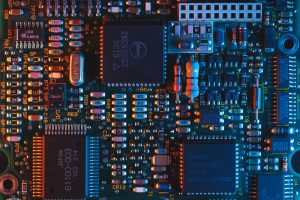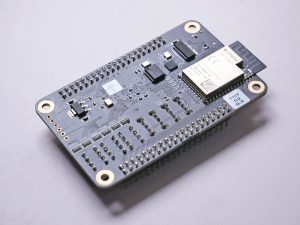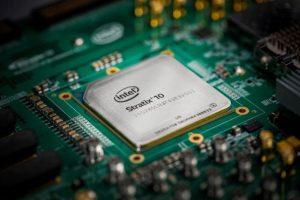
Exploring The FPGA Board
August 31 2023 
Inquiry
Global electronic component supplier AMPHEO PTY LTD: Rich inventory for one-stop shopping. Inquire easily, and receive fast, customized solutions and quotes.
QUICK RFQ
ADD TO RFQ LIST
FPGA boards have significantly transformed the digital hardware design and development industry. With their unparalleled flexibility, performance, and customization capabilities, these devices have become highly valuable in various applications. This blog aims to provide an in-depth understanding of FPGA boards, guide you in selecting the appropriate board for your requirements, and explore the advantages that FPGA boards offer over other hardware solutions.
What is An FPGA Board?

FPGA Board for Beginners
If you're a beginner interested in getting started with FPGA boards, there are a few key considerations to keep in mind. FPGA development can be an exciting and rewarding journey, but it's important to approach it with the right resources and learning materials. Here are some tips to help you get started with FPGA boards: Choose the right FPGA board: There are various FPGA boards available in the market, each offering different features, capabilities, and price points. As a beginner, it's recommended to start with an entry-level FPGA board that is beginner-friendly and well-documented. Understand the basics of digital logic: Before diving into FPGA development, it's important to have a solid understanding of digital logic concepts. This includes understanding Boolean algebra, logic gates, and basic circuit design. Familiarize yourself with concepts like combinational and sequential circuits, flip-flops, and basic arithmetic circuits. This knowledge will serve as the foundation for creating more complex designs on the FPGA. Learn a hardware description language (HDL): To program an FPGA, you'll need to learn a hardware description language (HDL) such as VHDL or Verilog. These languages allow you to describe the behavior and structure of the digital circuits you want to implement on the FPGA. There are numerous online tutorials, textbooks, and resources available to help you learn HDLs. Some popular resources include "Digital Design and Computer Architecture" by David Harris and Sarah Harris, as well as online platforms like Aldec, Xilinx, and Intel's websites, which provide tutorials and documentation for their respective FPGA boards. Start with simple projects: As a beginner, it's best to start with simple projects to gain hands-on experience with the FPGA board. Begin with basic tasks like implementing logic gates, creating simple counters, or building a traffic light controller. These projects will help you understand the FPGA development workflow, the synthesis process, and how to program the FPGA. Utilize online resources and communities: The FPGA community is vibrant and supportive, with many online resources available to help beginners. Practice and experiment: FPGA development is a hands-on learning experience. The more you practice and experiment with different projects, the better you'll become. Don't be afraid to try out new ideas, make mistakes, and learn from them. Start small and gradually tackle more complex projects as your skills improve.
How to Choose An FPGA Board?
Selecting the appropriate FPGA board for your project requires careful consideration of several important factors. By evaluating these factors, you can make an informed decision that aligns with your project requirements and objectives. Here are the key considerations to keep in mind when choosing an FPGA board: Project Requirements: Begin by clearly defining the specific requirements of your project. Consider the nature of the tasks or applications you intend to undertake with the FPGA board. Evaluate factors such as the required number of I/O pins, memory capacity, processing power, and any specific interfaces or protocols that need to be supported. This understanding will enable you to narrow down your options and select a board that best suits your project's needs. FPGA Vendor and Architecture: FPGA boards are provided by various vendors, including Xilinx, Intel (formerly Altera), Lattice Semiconductor, and Microchip. Each vendor offers FPGA boards based on different FPGA architectures, such as Xilinx's Artix, Spartan, or Virtex families, or Intel's Cyclone or Stratix families. Familiarize yourself with the different architectures and their capabilities to determine which one is most suitable for your project requirements. Development Tools and Ecosystem: Evaluate the availability and quality of development tools and the overall ecosystem provided by the FPGA vendor. Look for comprehensive and user-friendly software development environments, such as Xilinx Vivado or Intel Quartus Prime, that support the specific FPGA board under consideration. Additionally, assess the availability of documentation, tutorials, sample projects, and online communities that can provide support and resources as you learn and develop with the FPGA board. Budget: Establish a budget for your FPGA board. Prices for FPGA boards vary depending on features, capabilities, and the vendor. Take your budgetary constraints into account and identify a board that offers the necessary features without exceeding your financial limitations. Expansion and Connectivity Options: Consider the expansion and connectivity options provided by the FPGA board. Look for features such as GPIO headers, PCIe slots, Ethernet ports, USB ports, and additional memory slots. These options will allow you to connect peripherals and expand the functionality of your FPGA board as required by your project. Support and Documentation: Assess the availability of support and documentation for the FPGA board in question. Verify if the vendor provides comprehensive documentation, user guides, datasheets, and reference designs. Furthermore, seek a vendor that offers reliable technical support, whether through online forums, email, or phone, should you encounter any issues during your FPGA development process. User Reviews and Feedback: Conduct research on user reviews and feedback regarding the FPGA board you are interested in. This will provide valuable insights into the experiences of other users and help you assess the reliability, performance, and overall satisfaction with the board. By carefully evaluating these factors, you can confidently select an FPGA board that meets your project requirements, fits within your budget, and is supported by reliable documentation and technical assistance. It is advisable to conduct thorough research and comparison of different options before making a final decision.How to Use FPGA Board?
To utilize an FPGA board, there are multiple stages involved, ranging from configuring the hardware to coding the FPGA and linking it with other parts. A basic manual is presented below to assist you in commencing your use of an FPGA board. Familiarize Yourself with the FPGA Board: Begin by thoroughly reading the documentation and user manual provided by the FPGA board manufacturer. Understand the board's specifications, features, and pinout configuration. This information will be crucial for designing your circuits and connecting peripherals. Install Development Tools: Install the necessary software development tools provided by the FPGA board vendor. These tools, such as Xilinx Vivado or Intel Quartus Prime, allow you to design and program the FPGA. Make sure to follow the installation instructions provided by the vendor. Set up the Hardware: Connect the FPGA board to your computer using the appropriate interface, such as USB or Ethernet. Ensure that all necessary cables and power supplies are properly connected. Refer to the board's documentation for specific instructions on hardware setup. Design Your Circuit: Use the development tools to design your circuit using a hardware description language (HDL) such as VHDL or Verilog. These languages allow you to describe the behavior of your digital logic circuits. Familiarize yourself with the syntax and structure of the HDL you choose to work with. Write and Compile Your Code: Write your code in the chosen HDL, specifying the desired functionality of your circuit. Once you have completed your code, use the development tools to compile it into a bitstream file. This file contains the configuration information for the FPGA. Program the FPGA: Use the development tools to program the FPGA with the generated bitstream file. This process involves transferring the configuration data to the FPGA, enabling it to implement the desired logic circuits. Verify and Test Your Design: After programming the FPGA, test your design to ensure it functions as intended. You can use simulation tools provided by the development environment to verify the behavior of your circuit before deploying it on the FPGA board. Interface with Other Components: If your project requires interfacing with other components, such as sensors or external devices, refer to the board's documentation to identify the appropriate interfaces and protocols. Implement the necessary communication protocols in your FPGA design to establish communication with these components. Debug and Iterate: During the development process, it is common to encounter issues or bugs in your design. Use the debugging features provided by the development tools to identify and resolve any problems. Iterate on your design as needed to improve its functionality and performance. Document and Maintain: Keep detailed documentation of your design, including the circuit diagram, code, and any modifications made during the development process. This documentation will be valuable for future reference and troubleshooting. Remember that FPGA programming and development can be complex, and it may require a learning curve to become proficient. Take advantage of online resources, tutorials, and forums to enhance your understanding, and seek assistance from the FPGA community when needed. With practice and experience, you will become more proficient in using FPGA boards for your projects.
Advantages of FPGA Board
FPGA boards are popular for different applications due to their advantages. Flexibility: FPGA boards are highly flexible and can be reprogrammed or reconfigured to implement different functionality and algorithms. This flexibility allows developers to customize the hardware to meet specific requirements, making FPGAs suitable for a wide range of applications. Performance: FPGA boards can provide high-performance computing capabilities. The parallel architecture of FPGAs allows for the execution of multiple tasks simultaneously, resulting in accelerated processing speeds and improved performance compared to traditional processors. Real-Time Processing: FPGAs are well-suited for real-time processing applications due to their ability to handle parallel computations and execute tasks in parallel. This makes them ideal for applications that require rapid data processing and low-latency responses. Power Efficiency: FPGA boards can be power-efficient compared to general-purpose processors for certain applications. By customizing the hardware to match specific computational requirements, FPGAs can achieve better power utilization, reducing overall energy consumption. Prototyping and Development: FPGA boards are commonly used in the prototyping and development stages of electronic systems. They allow designers to quickly iterate and test different hardware designs without the need for custom chip fabrication. This accelerates the development process and reduces time to market. Hardware Acceleration: FPGAs can be used to accelerate specific tasks or algorithms by offloading them from the main processor. This hardware acceleration can significantly improve performance and efficiency for computationally intensive applications, such as machine learning, image processing, cryptography, and signal processing. Customizability: FPGA boards provide the ability to create custom digital circuits and interfaces. Developers can design and implement custom logic to meet specific requirements, enabling the integration of specialized functionality into the FPGA-based system. Scalability: FPGA boards can be easily scaled by adding more FPGA chips or using larger FPGA devices. This scalability allows for the implementation of complex and demanding applications that require additional computational resources. FPGA development requires specialized knowledge in hardware description languages like Verilog or VHDL and may have higher upfront costs compared to general-purpose processors. However, their benefits in flexibility, performance, and customization make them a compelling choice for many applications.Conclusion
FPGA boards are versatile and powerful solutions for various applications. They are highly sought after in industries like telecommunications, aerospace, and automotive due to their flexibility, high performance, and real-time processing capabilities. With the ability to customize hardware, achieve power efficiency, and accelerate complex computations, FPGA boards provide a competitive edge. Whether you're a beginner or an experienced developer, exploring FPGA boards can lead to exciting opportunities for innovation and hardware design. Embracing FPGA technology offers enhanced performance and customization, making it an excellent choice for advanced computational solutions.Related Articles
- ·Stratix 10 VS Stratix V: Which FPGA is Right for Your Next Project?
- ·Intel Xeon Platinum 8454H vs AMD EPYC: Which Reigns Supreme?
- ·A Deep Dive into the AMD EPYC 4564P Processor
- ·MSP430F5438A vs MSP430F5529: A Detailed Analysis of Their Capabilities
- ·Comparing MSP430F6659 and MSP430F5419A: Which One is Right for Your Project?
- ·Exploring the Features of MSP430F5529 and MSP430F5638 Microcontrollers
- ·Demystifying 20 Microcontroller Projects for Beginners
- ·Unveiling the Ultimate Guide to Microcontroller Programming
- ·4680 Battery: Unveiling the Power Potential of the Next-Gen Cell
- ·Exploring the Case Studies on Arduino Applications
Populer Posts
